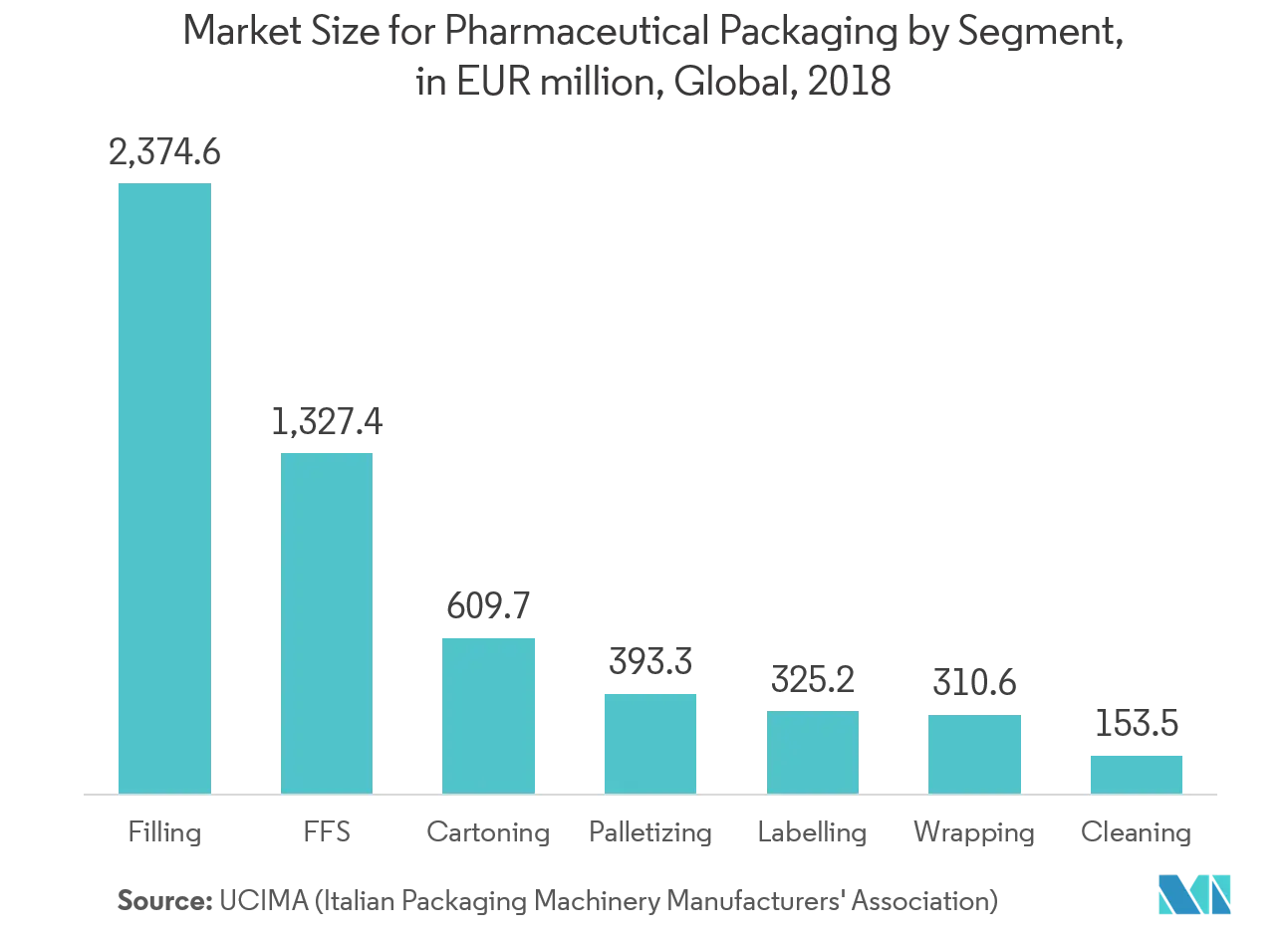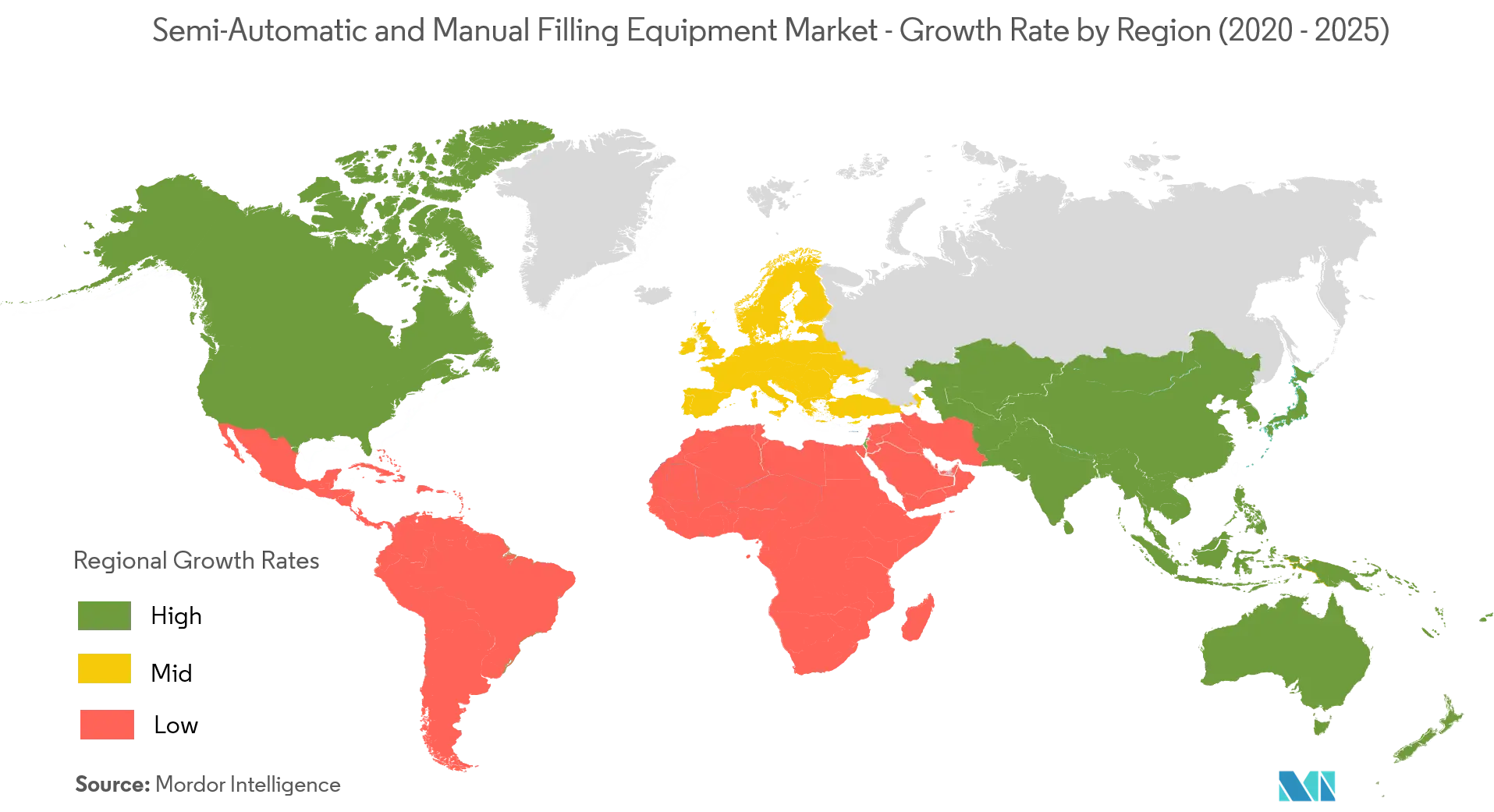Market Trends of Semi-Automatic and Manual Filling Equipment Industry
This section covers the major market trends shaping the Semi-Automatic & Manual Filling Equipment Market according to our research experts:
Pharmaceutical Accounted for the Market Growth
- With the increasing demand for generic medicines and biologics, the demand for filling equipment is raising globally. According to IQVIA, the distribution of pharma sales is rising every year as in 2018, United States individually accounted for 47% of the global pharma sales, Europe accounted for 20% and emerging markets showed 21% of the sales. These stats drive the demand for filling equipment where vendors are incorporating the features into their equipment which are designed to reduce the risk of any contaminants entering the process.
- The companies are providing a wide range of packaging machinery like a liquid filling machine, powder filling machine, tube filling machine, etc. Syringe filling equipment provides large scale filling and ensures sterility and dispensing of correct volume where the usage of semi-automatic filling equipment is widely used, while vial filling equipment can fill hundreds of vials per minute while securing against product loss and inconsistent volume.
- The capsule filling machine is widely used and are in huge demand in pharmaceutical applications. These days, the majority of people are preferring to intake medications in the form of capsules. As a result, the demand for capsules is increasing in pharmaceutical industries where the companies prefer semi-automatic and manual filling equipment based on factors such as machine cost, size of batch operations and mostly manual capsule filler when it comes to handling difficult powders and products.
- For instance, Lodha International, one of the prominent players in manufacturing filling equipment for pharma provides filling in both types of equipment. In semi-automatic, the company mostly preferred to precision manufacturing requirements and has been developed as per the GMP standards and has the competency to produce an output rate of 25000 to 47000 capsules per hour. While manual filling equipment is preferred for small scale applications where it can fill and close capsules at a rate of 300 per cycles and is capable of producing 8000 capsules per hour.

Asia-Pacific to Witness Substantial Growth
- The Asia-Pacific regions attribute to the highest demand for skincare, and particularly luxury products, as stated by L'Oréal. Also, it is being favored by the rising disposable income of consumers, the trend of online shopping and with an increasing consumer base of people interested in personal hygiene and physical appearance. This is supported by highly populated countries, like India and China by which the usage of semi-automatic and manual filling equipment increases in this region for cosmetic creams, hair gel, lotion, scrubs, etc.
- Moreover, according to WHO, in the Southeast Asia region, cardiovascular diseases, chronic respiratory diseases, diabetes, and cancer are the foremost diseases by which the demand for medicines rises. According to the Department of Pharmaceuticals which comes under the Ministry of Chemicals and Fertilizers, in India pharmaceutical market turnover reached Rs 129,015 crore (USD 18.12 billion) in 2018, growing 9.4 percent year-on-year and exports revenue was USD 17.28 billion in FY18 and USD 19.14 billion in FY19. These stats drive the demand for filling equipment in this country.
- Also, some pharma packaging players are expanding their plants which attribute to the market growth. For instance, in March 2019, the pharmaceutical packaging company Schott Kaisha expanded its capacity to manufacture vials, pre-filled syringes, and sterile solutions. The company’s expansion plans include new sites in Gujarat and North India, along with the expansion and up-gradation of existing plants in Daman and Jambusar in Gujarat. With these developments, the demand for semi-automatic and manual filling equipment rises effectively in this country.
- Moreover, some players are a global supplier for these equipments and contribute to the growth of the market for this region. For instance, China's Guangdong Rich Packing Machinery Co. provides its manual filling equipment to about 30 provinces and cities in China country, and also to Southeast Asia, Japan, United States, Europe and other countries and regions.

